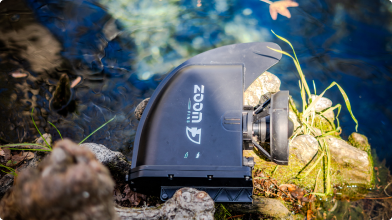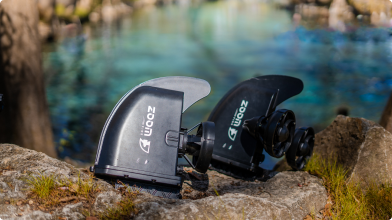
How to Balance on Paddle Board
Paddle boarding is an excellent mix of relaxation, exercise, and adventure. However, for beginners, staying balanced can feel challenging. Don’t worry—this guide will help you master balance and paddle confidently.
Why Is Balancing on a Paddle Board Tricky?
Balancing on a paddle board feels difficult because you’re standing on water, and the board moves with every ripple or wave. Your natural instinct to overcorrect can make you wobble even more. Fortunately, with some patience and practice, you’ll build the stability and confidence to enjoy paddle boarding to its fullest.
Preparation Tips for Paddle Board Balance
Proper preparation is key to mastering balance. Follow these tips to get started.
1. Choose the Right Board
Your paddle board serves as your foundation, so choosing the right one is crucial:
-
Width: A board at least 32 inches wide offers more stability.
-
Length: Longer boards (10–12 feet) are better for beginners.
-
Volume: Boards with higher volume (measured in liters) support more weight and prevent sinking.
-
Material: Inflatable boards are softer, beginner-friendly, and portable.
-
Fins: Stability fins, like Zoomfins, help keep the board straight and steady.
2. Wear the Right Gear
The right gear can make your experience more comfortable:
-
PFD (Personal Flotation Device): Essential for safety and confidence.
-
Clothing: Opt for quick-drying, water-friendly clothing such as rash guards or wetsuits.
-
Footwear: Non-slip water shoes improve grip on the board.
-
Sun Protection: Use sunscreen, sunglasses with a strap, and a wide-brimmed hat.
3. Practice in Calm Waters
Start in calm conditions to build confidence:
-
Ideal Locations: Small lakes, bays, or slow-moving rivers with little current or wind.
-
Shallow Waters: Choose areas where you can easily stand if you fall.
-
Anchor Your Board: Tie the board to a stationary object for initial stability practice.
4. Warm Up Your Body
Prepare your muscles with stretches to improve balance:
-
Dynamic Stretches: Focus on your legs, hips, and core with lunges and side stretches.
-
Balance Drills: Practice standing on one leg to engage stabilizer muscles.
Techniques to Start Balancing
Start with these steps to get comfortable on your board:
1. Begin on Your Knees
Kneeling is the best way to adjust to the board’s movement:
-
Place your knees shoulder-width apart on either side of the center handle.
-
Hold the paddle parallel to the board and take smooth strokes to move forward.
-
Shift your weight slightly to understand the board’s dynamics.
2. Transition to Standing
When you feel ready, transition to standing:
-
Foot Placement: Position your feet where your knees were, on either side of the center handle.
-
Standing Up: Slowly push up with your hands and bring one foot at a time into position.
-
Weight Distribution: Keep your weight evenly distributed between both feet.
3. Engage Your Core
Engage your abdominal muscles to stabilize your body as you stand and paddle.
4. Use the Paddle for Support
Hold the paddle horizontally for balance during transitions, and use it to brace against the water if you feel unsteady.
How to Stay Balanced While Standing
Once you’re standing, focus on maintaining balance with proper posture and technique:
1. Keep Your Eyes on the Horizon
Looking forward, rather than down at your feet, helps maintain proper posture and stability.
2. Distribute Weight Evenly
Stand with feet shoulder-width apart and center your weight over the board. Avoid leaning forward, backward, or to the sides.
3. Bend Your Knees Slightly
Slightly bent knees lower your center of gravity and help you adjust to movements more effectively.
4. Relax Your Shoulders
Tension in your upper body can throw off your balance. Keep your shoulders relaxed and let your arms move naturally.
Handling Wobbles and Falls
Wobbles and falls are normal parts of learning. Here’s how to handle them:
1. Stay Relaxed
Tension can make balancing harder. Breathe deeply, relax your muscles, and let your body flow naturally with the water.
2. Bend Your Knees
Keep your knees slightly bent to absorb movements and stabilize yourself.
3. Adjust Your Stance
Widen your stance or stagger your feet slightly for more stability.
4. Use the Paddle
Brace the paddle blade flat on the water for extra support during wobbly moments.
5. Getting Back On
If you fall:
-
Approach the center of the board.
-
Grab the handle with one hand and kick to pull your chest onto the board.
-
Swing your legs up once your upper body is secure.
Improving Balance Over Time
With regular practice and targeted exercises, your balance will improve.
1. Practice Regularly
Frequent short sessions build muscle memory and confidence. Even 15–20 minutes a few times a week makes a difference.
2. Incorporate Balance Exercises
-
Yoga: Poses like Warrior II and Tree Pose help with stability.
-
Pilates: Core-strengthening moves like planks improve control.
-
Balance Drills: Practice standing on one leg or using a balance board.
3. Challenge Yourself
As you improve, try paddling in wavy conditions, making quick turns, or increasing your speed to develop dynamic balance.
Final Advice for Beginners
1. Have Fun
Don’t worry about falling—it’s part of the process. Laugh at stumbles and enjoy the adventure.
2. Go with a Buddy
Paddling with a friend is safer and makes the experience more fun.
3. Take It Slow
Set small, achievable goals and focus on steady progress.
4. Stay Safe
Wear a PFD, practice in calm waters, and stay hydrated. Use sunscreen and protective clothing to shield against the sun.
Balancing on a paddle board is a journey, not a destination. With patience, practice, and a sense of adventure, you’ll soon be gliding across the water like a pro. Now grab your board and paddle your heart out!




